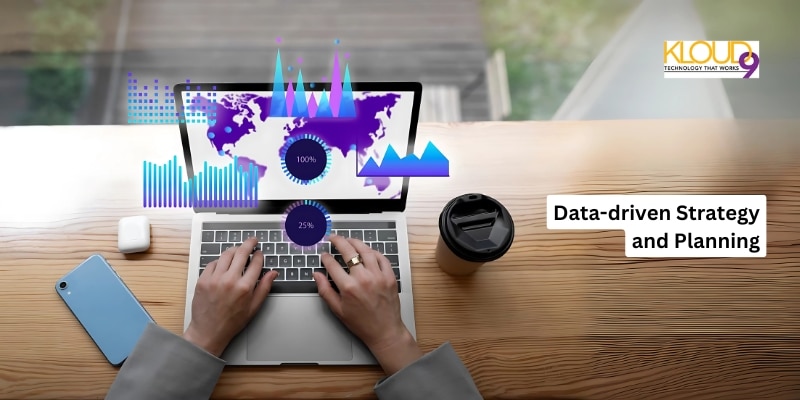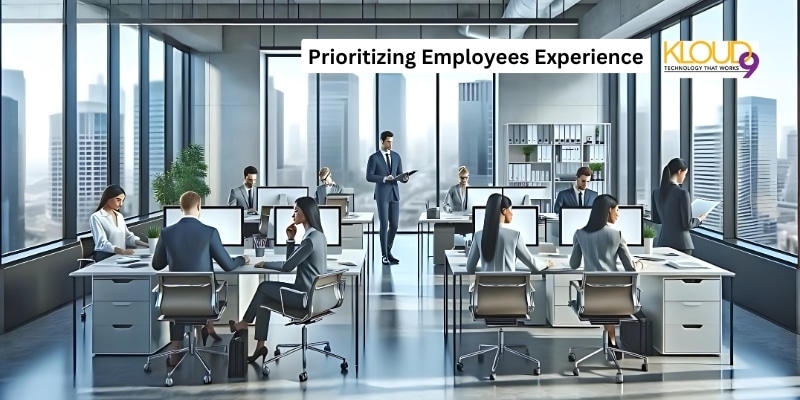The power of IT solutions lies in transforming the modern workplace, which is currently experiencing a fundamental change. In the past, everyone in a business environment has encountered a stringent hierarchy, complex routines, and a disconnection in communication.
However, the workforce in this current era is more tech-savvy, coordinated, and directed toward an increase in innovative managed IT services that promote creativity, connectivity, and productivity.
Navigating innovations and trends is often noticeable in our business progress and how we interact at the workplace. The possibilities are endless, from cloud computing to cybersecurity solutions and machine learning. In this article, you will see the latest innovations and trends in IT solutions for a better future in the modern workplace.
Some Transformative Trends and Innovations to Watch
When you think about the future of the workplace, you may think of artificial intelligence, the Internet of Things, and other cybersecurity solutions. However, some of these trends originated from the COVID-19 pandemic, permanently transforming the modern workplace.
This means the new standard is a hybrid and remote work arrangement, and many industries face staffing deficiencies. Employers are looking for innovative technologies to improve workspace, fast-track a shift in IT development, and respond to rising challenges.
So, here are some transformative trends and innovations that will redefine the workplace in 2025 and beyond.
Unified Connectivity and Seamless Device Integration
Innovations can enhance employee engagement and experience in the modern workplace. This is seen in hyper-connectivity and effortless device integration, which facilitate businesses with unified management over all platforms and devices. This kind of IT advancement enables safe access to workplace resources, no matter the location and time of operation.
Also, hyper-connected businesses improve flexibility and mobility in a work environment. This is so because employees can easily connect to work resources, enabling easy cooperation with any device and nurturing an active and adjustable workplace.
Unified device management promotes flexibility and workspace activity, enhances cybersecurity measures for IT support services, and aligns with regulatory guidelines to protect sensitive information. This innovation is the beginning of unparalleled integration, where work goes beyond physical limitations and blends effortlessly into daily routine.
Zero or Low-Code Development Democratization
One of the most outstanding IT solutions for the modern workplace is code-free innovation, which has remained a significant trend since the pandemic. This IT innovation increasingly prioritizes empowering resident inventors through modern tools like Azure Logic Apps and Power Apps, allowing them to design personalized software solutions without any coding skills.
The future impact of this trend is poised to revolutionize the application development landscape, enabling business users to design customized IT solutions with little or no expertise in coding. By democratizing business development, IT support services and business organizations can anticipate faster innovation and effectively handle specific business needs in the workplace. This trend is also cost-effective when compared with traditional coding techniques.
Data-driven Strategy and Planning
Another modern workplace trend to watch out for in 2025 is integrating machine learning and other advanced analytic tools within the Microsoft 365 migration service application. This innovation facilitates real-time data analysis in small and large organizations' critical decision-making.
The data-driven strategy approach enables businesses to stay ahead of the curve, promotes new opportunities, and accelerates sustainable growth in an evolving market landscape. Data-driven decision-making also reduces risk by providing more insight into future outcomes and enabling resource allocation through informed investment decisions.
As organizations increasingly depend on analytic decision-making, they may also confront critical data privacy and security issues. To navigate these complex dynamics with integrity, it is essential to prioritize transparency when collecting, using, or sharing data. Strong security measures should also be implemented to protect sensitive information and ensure user control rights.
Enhanced Security and Compliance Measures
As cybersecurity threats increase and data regulations become more stringent, data security has remained a top priority for organizations. To address these challenges, the Microsoft 365 migration service is committed to providing innovation, and this focuses on the following:
- Improving security features to stay ahead of emerging cybersecurity threats.
- Providing compliance with strict regulatory requirements.
- Ensuring advanced protection for sensitive information.
- Protecting business continuity with seamless and safe operations.
Microsoft's steadfast dedication to compliance is a hallmark of its commitment to excellence. It ensures that Microsoft 365 solutions adhere to the most stringent data privacy and security standards. By maintaining security measures, organizations can strengthen their defenses against cybersecurity threats, mitigate potential economic losses, reduce downtime, and ensure business continuity.
With Microsoft 365, small and large businesses can trust that their data is protected and their security is fortified, empowering them to focus more on driving business success. Through a forward-thinking approach to data security, Microsoft 365 also allows businesses to safeguard their data against cyber threats and maintain trust in the workplace.
Prioritizing Employees Experience
By focusing on staff experience, modern tools like Headspace integration and Viva Connections can be widely adopted in the work environment. This trend helps promote employees' well-being and mental health. The strategic focus on staff members can create a favorable and adequate workspace that manages the holistic needs of workers in an organization.
By focusing on employee experience, organizations of all levels can attract joyous talent within employees and ensure a boost in their well-being through an active and positive working environment. It also increases engagement and productivity, elevates satisfaction, and reduces workforce turnover.
To provide a thriving IT solution in an advanced workplace, it is pertinent for organizations to invest in extensive employee training. This helps facilitate transparent workplace communication and empowers workers to participate in the modern workspace strategy. So, prioritizing employee experience allows organizations to create a closer relationship with employees that benefits both parties and the business, ensuring sustainable growth and success.
Conclusion
The modern workplace needs to stay updated on trends and innovations when shaping the IT team to stay ahead of the curve in today’s fast-paced digital dynamic. The trends are worth watching because the 21st century needs a more active workforce fueled by technological breakthroughs. As organizations embrace these innovations and trends, they will foster more growth, ensure employee satisfaction, and maintain a working environment that the workforce can access from various devices and locations.





You must be logged in to post a comment.